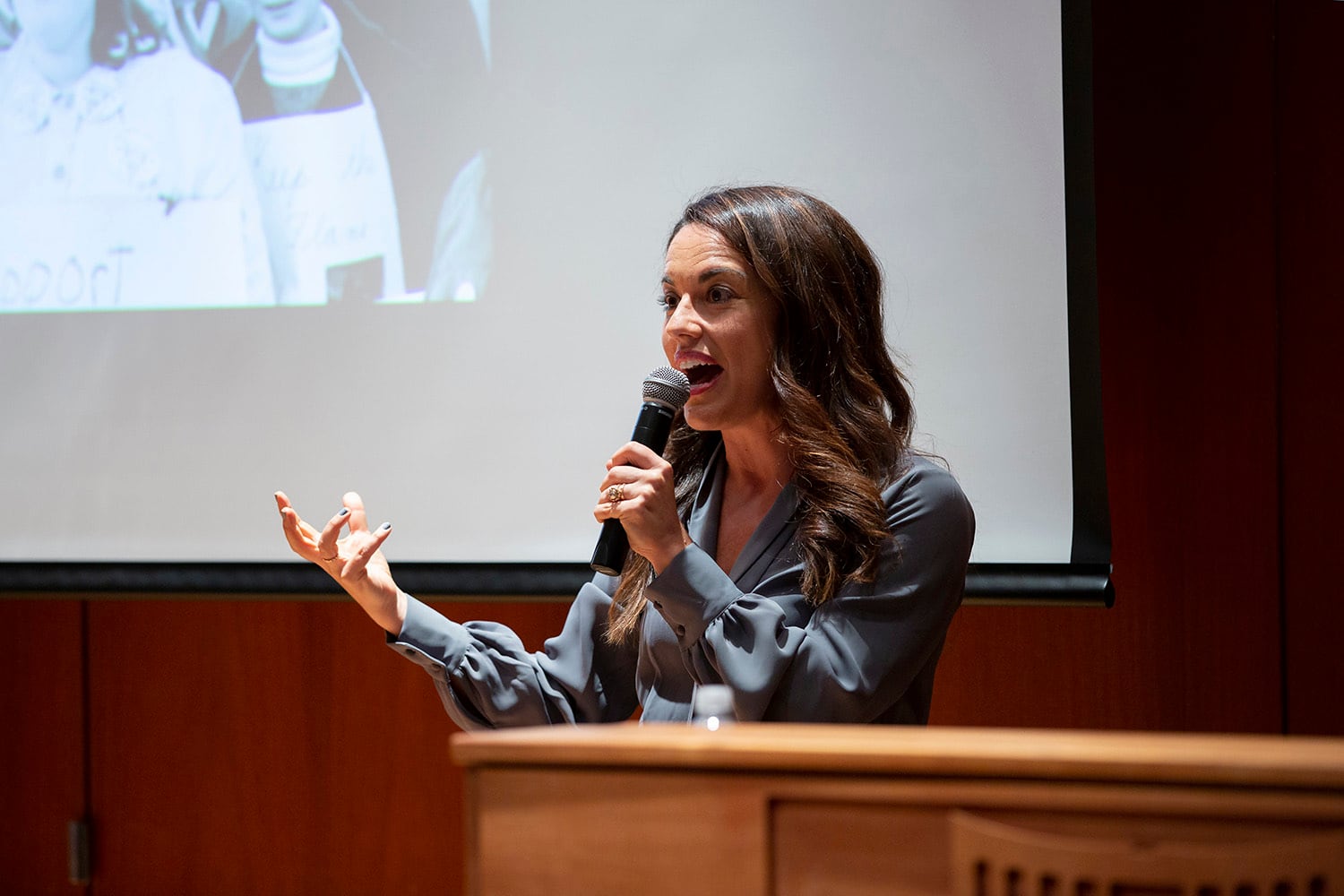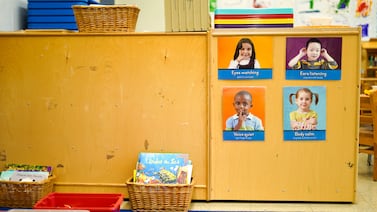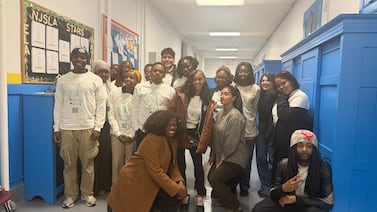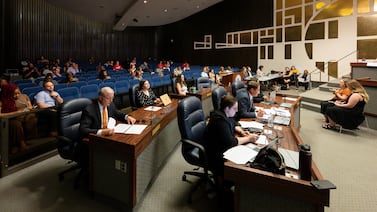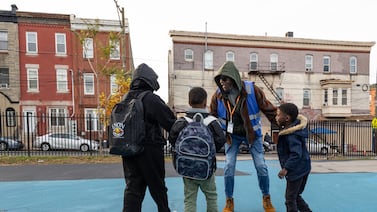Sign up for Chalkbeat’s free monthly newsletter How I Teach to get inspiration, news, and advice for — and from — educators.
In late 2023, New York City Education Department officials approached historian Natalia Mehlman Petrzela to be the lead scholar on a new curriculum focused on Jewish American history. The project would be part of the city’s Hidden Voices initiative, centering diverse historical figures left out of typical textbooks.
Petrzela, a history professor at the New School, was initially surprised. Though a historian of American politics and culture — her book, “Fit Nation: The Gains and Pains of America’s Exercise Obsession,” is being turned into a documentary — Jewish studies is not her primary field of study. But the more she understood the goals of the Hidden Voices project, the more she realized how well-suited she was for the task.
“The work of amplifying ‘hidden voices’ who may not be central to conventional historical narratives is core to what I do as a teacher and a scholar,” said Petrzela, who began her career as a New York City classroom teacher. “Also, much of my scholarship has been about the teaching of divisive issues in K-12, particularly around identity, and the controversy that often follows.”
Education Department officials said the materials will be available to all students next school year. They are also piloting the resource in five New York City districts that will provide feedback on the lessons. City schools already have access to Hidden Voices materials focused on LGBTQ history, Asian American history, the African diaspora, and Americans with disabilities.
Officials had announced the Jewish American materials were forthcoming as well as materials focused on Muslim Americans after a rise in antisemitic and Islamophobic incidents increased following the Oct. 7, 2023, terrorist attack on Israel and devastating war in Gaza that followed. Lessons on the Latino community are expected to be completed by the end of the school year.
Petrzela hopes that students and teachers will not only learn about a series of important individuals but also be inspired to ask new questions about the nation’s past and present. The project was also especially meaningful for Petrzela post Oct. 7.
“As a Jew, in addition to my professional roles, I have been speaking up when I think appropriate to address the unfortunate polarization that I see taking hold in many educational environments and our culture,” she said, noting that education is a critical way to get beyond this. “I hope that learning about Jewish experiences and identity across history — and not just in regards to the Israel/Hamas war — will take the temperature down on some of those conversations, and make them more informed and empathetic.”
Petrzela spoke recently with Chalkbeat New York.
This interview has been lightly edited for length and clarity.
Why did it feel so important to take this project on?
It was disappointing, if not totally surprising, to me that the New York City schools did not already have a coherent set of materials to teach Jewish American history, given how important Jews are in New York City history and vice versa. For me, witnessing the disturbing aftermath of Oct. 7 in many educational environments, including, but not limited to, New York City, infused real energy into addressing that omission. That is, I think the antisemitism that we have seen flare is due, at least in some part, to ignorance.
I was horrified and depressed to see false claims and antisemitic tropes circulating unchallenged at schools and colleges, supposed bastions of enlightenment and inclusion, but I realized that despairing or engaging in an endless game of what I describe as “antisemitism whack-a-mole” was depleting and unproductive.
I remain idealistic that education can be an important part of the solution to this situation, and leading Jewish American Hidden Voices, or JAHV, feels like a valuable way to make a proactive and unique contribution.
It’s hard to discuss this project in isolation from what’s been happening in some New York City public schools since Oct. 7, not only with the high-profile incidents, like the Hillcrest High School teacher targeted by students over her support of Israel, but also a broader rise of antisemitism in schools. We recently saw the chancellor issue apologies for “offensive” communications that went out to educators and families. How do you hope the Hidden Voices materials can combat some of what’s been happening in schools?
I hope that it contributes to reducing the antisemitism that has been on display not only in NYC but in many other places, as it will be freely available online. I think JAHV adds something really important to two existing approaches to teaching about Jewish experiences: Holocaust and antisemitism education, the former is required in many states, and the latter is often introduced as the result of an incident.
Hidden Voices is complementary but very different, as it introduces Jewish-American experiences as intertwined with the long span of U.S. history, and widens the lens beyond incidents of antisemitism and the specific and seismic trauma of the Holocaust, although it of course addresses both as well.
Can you tell us about your process? How long have you been working on it? Where did your research take you? How did you decide what to keep and what to cut?
After I accepted this offer, we set about brainstorming two lists: of individuals to include as profiles and of experts we hoped would write for us. The hardest part was cutting both of those down and finessing them to be representative in a range of ways.
The idea of Hidden Voices is to highlight individuals in an identity group that has often been overlooked in history, and also to teach about people who are not only the most famous figures in a given group. So, yes, there are profiles of luminaries such as Supreme Court Justice Louis Brandeis and poet Emma Lazarus, but also of fascinating figures, such as Harry Lender, the entrepreneur who made frozen bagels a supermarket staple, and Nancy Lieberman, the basketball star and women’s sports trailblazer.
One way we distilled the list was to focus on people whose stories illuminated aspects of Jewish American identity and that allow teachers to make fruitful connections to broader historical themes, both to deepen and challenge them. While this is a project of the NYC schools, and New York City is clearly such an important site in American Jewish life, we also really tried to select individuals whose lives and careers took them all over the country, itself an effort to challenge the stereotype of the “New York Jew.”
As for what we decided to keep in or cut, it was important to me that we explain, in every profile, how a figure’s Jewishness related to their life. For some of the figures we profile, being Jewish is a major part of their identity and career; for others, it can feel almost incidental. To us, that difference in itself is important in understanding the different ways Jews have inhabited their identity throughout U.S. history.
We kept in mind that it was especially important to resist any simplification of figures to heroes or villains, especially if there was a risk of perpetuating stereotypes. Our contributors did a great job with this.
What were some of the most surprising things you learned while doing the research?
I am not sure about surprised, but as challenging as this sprawling project is, I was gratified at how easy it was to illuminate so many diverse realms of American culture through the experiences of Jews in this country. This tiny minority — about 2.4% of the United States population today — has made incredible contributions, from the arts to athletics to organizing to industry, and it was not all that difficult to convey this range and diversity through our materials. Now people just have to use them!
Are there any figures that you’re especially excited for students — and teachers — to learn about?
Don’t make me choose — they are all so good! But since I absolutely love using pop culture to get at deeper historical themes, I am biased to be especially excited about profiles like that of Gold Rush entrepreneur Levi Strauss, who gave us denim as we know it, and of Dr. Ruth Westheimer, the Holocaust survivor who got a generation of Americans talking openly about sex.
I’m wondering if you have thoughts about teaching Holocaust history in a post-survivor world?
When I was growing up, it was almost commonplace to learn about the Holocaust through survivors who would generously give talks at all kinds of venues, including schools. I remember their bracing accounts like it was yesterday. That era is all but over, and I think Hidden Voices will be one resource valuable in teaching about some of that history that too many people are ignorant of, or even deny. While [Jewish American Hidden Voices] is not organized around the Holocaust, this tragedy is so central to understanding modern Jewish experiences that, of course, it is addressed across our materials.
In general, what is your hope for how students and educators engage with these materials?
On the broadest level, I hope that these materials push educators and students to think about who identity-based curricula are for. Yes, of course, it is important for minority groups to “see themselves” represented in curricula, but I think that ambition is far too parochial for our current reality. We should all be curious about each other’s experiences, because when we turn inward and away from each other, we are left with an incomplete and inaccurate picture of the past and are ill-equipped to engage in our complicated present. Because Jews are such a tiny minority, I hope a curriculum like this sparks people to think about this question and invigorates them to commit to a pluralism and universalism that I personally think is the beating heart of a healthy community, in the classroom or beyond.
Amy Zimmer is the bureau chief for Chalkbeat New York. Contact Amy atazimmer@chalkbeat.org.

